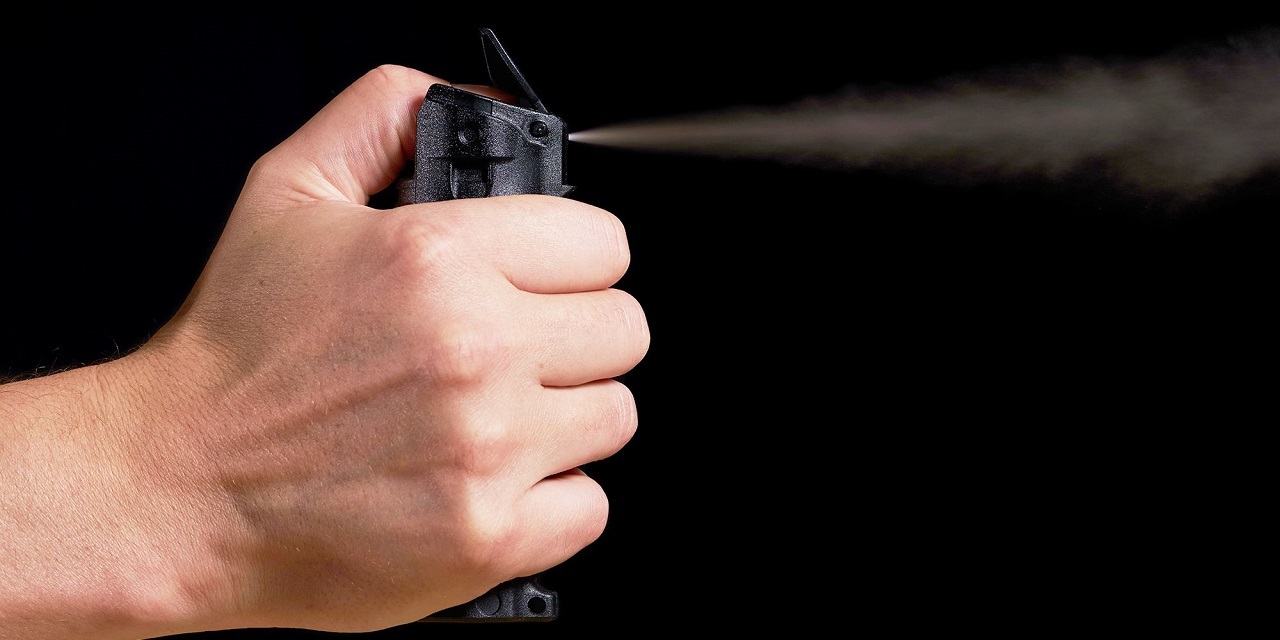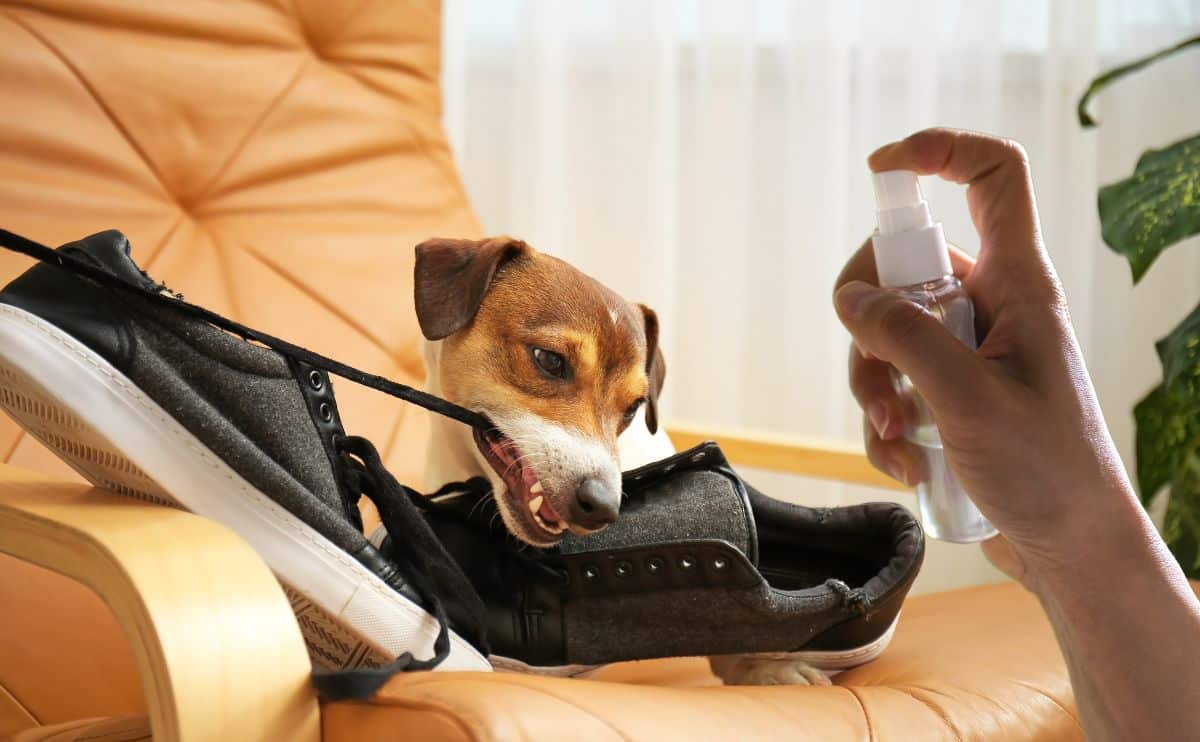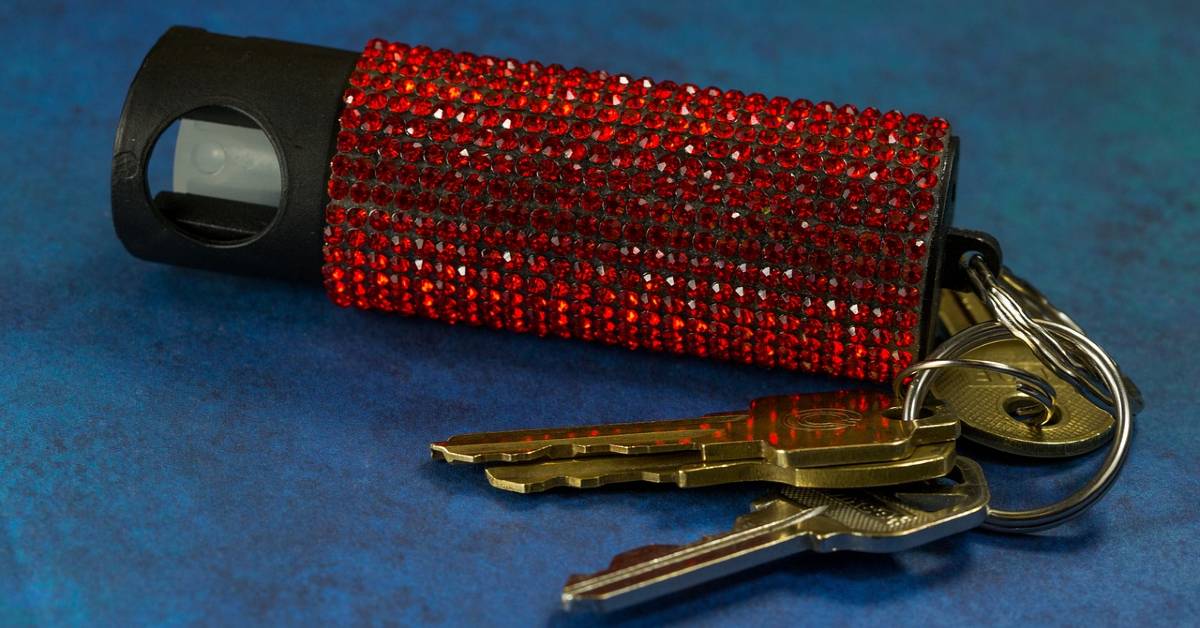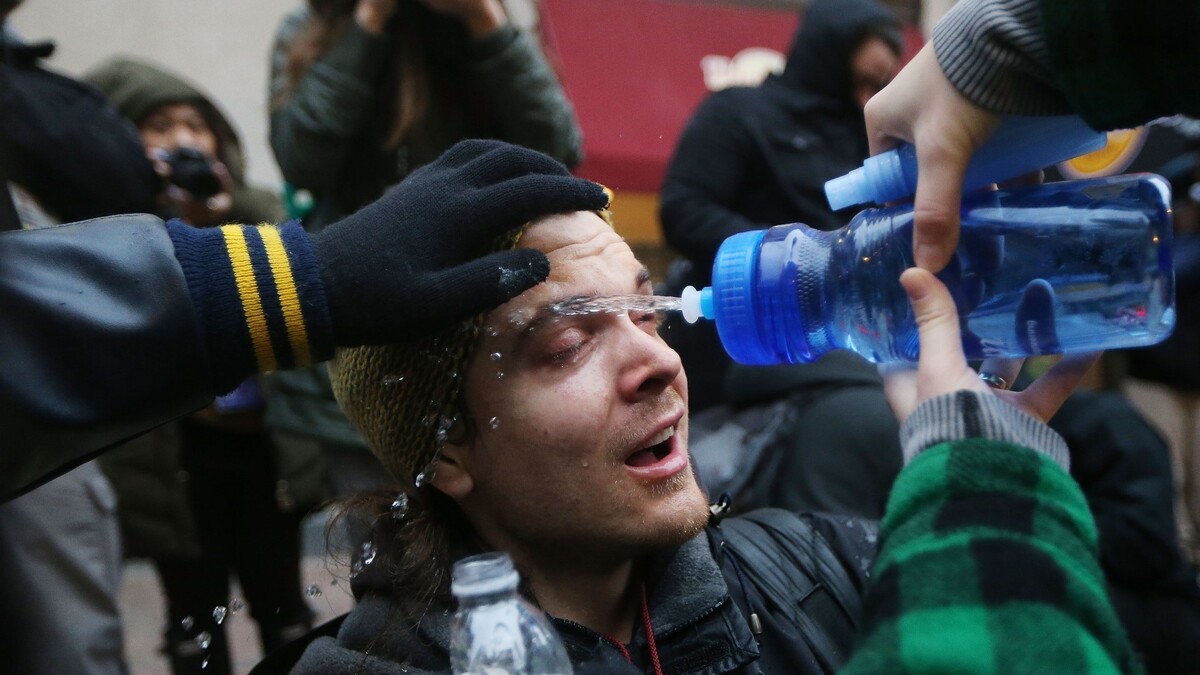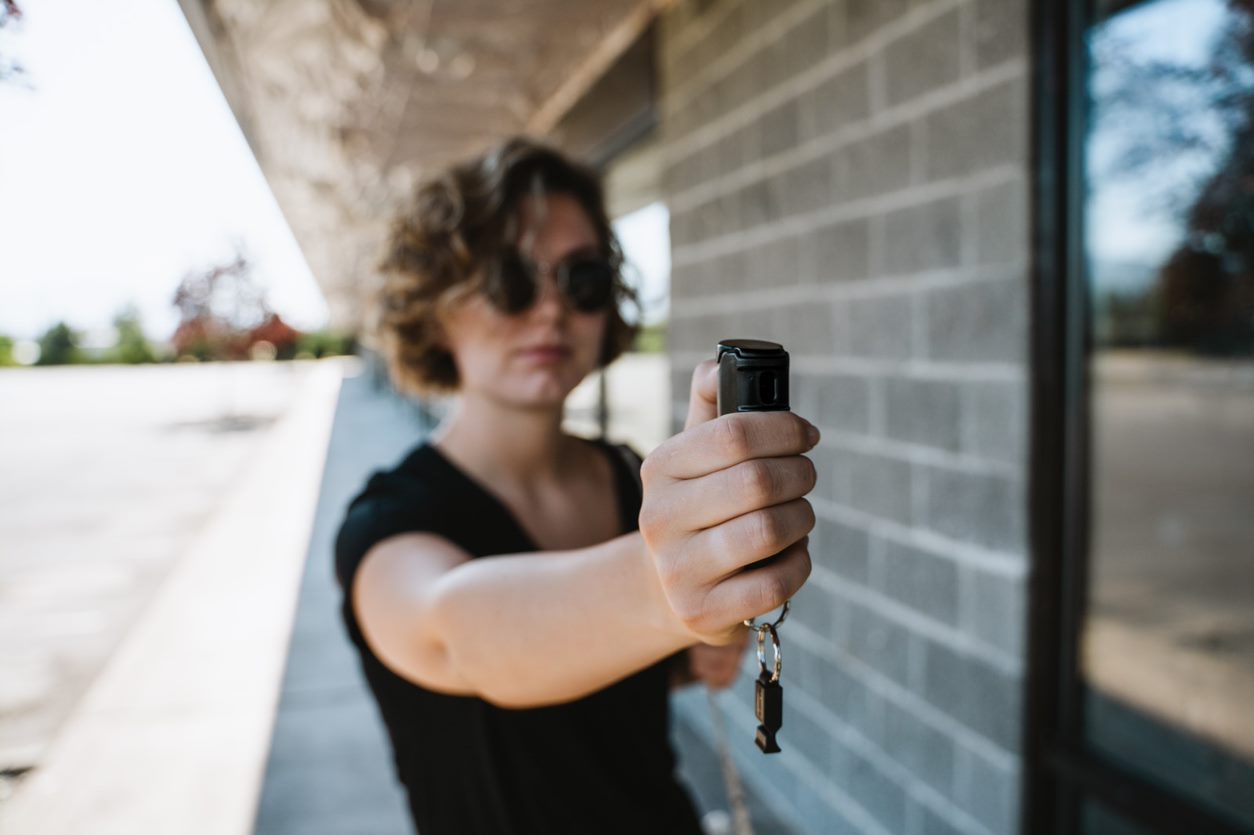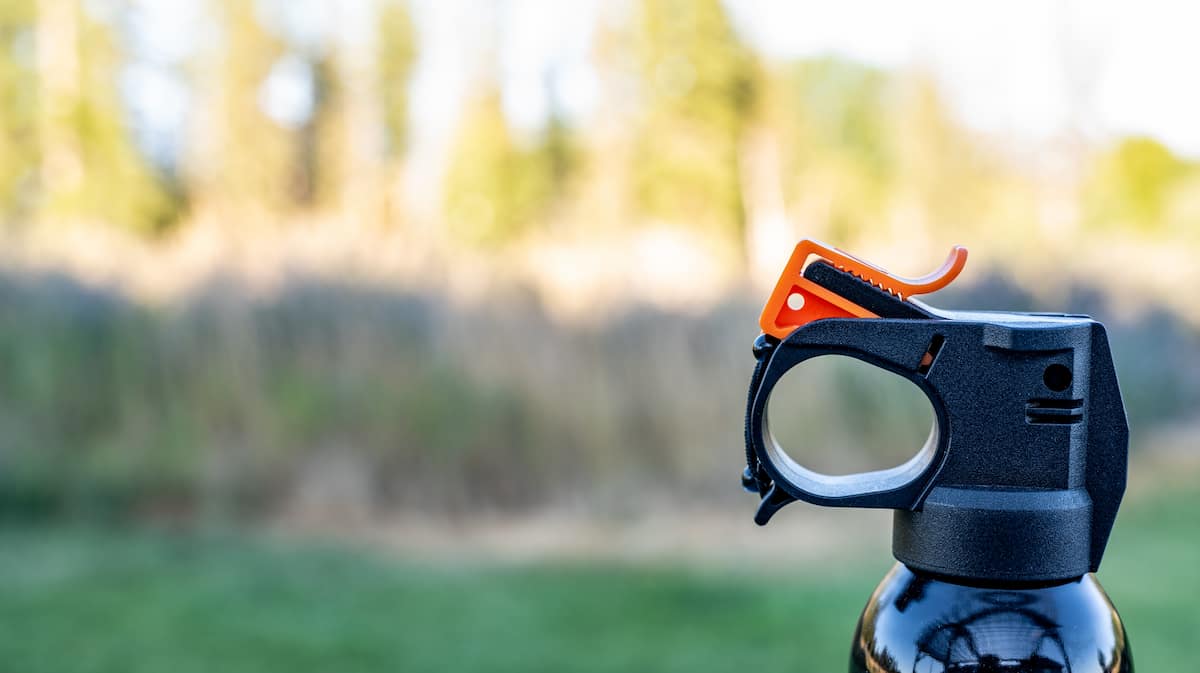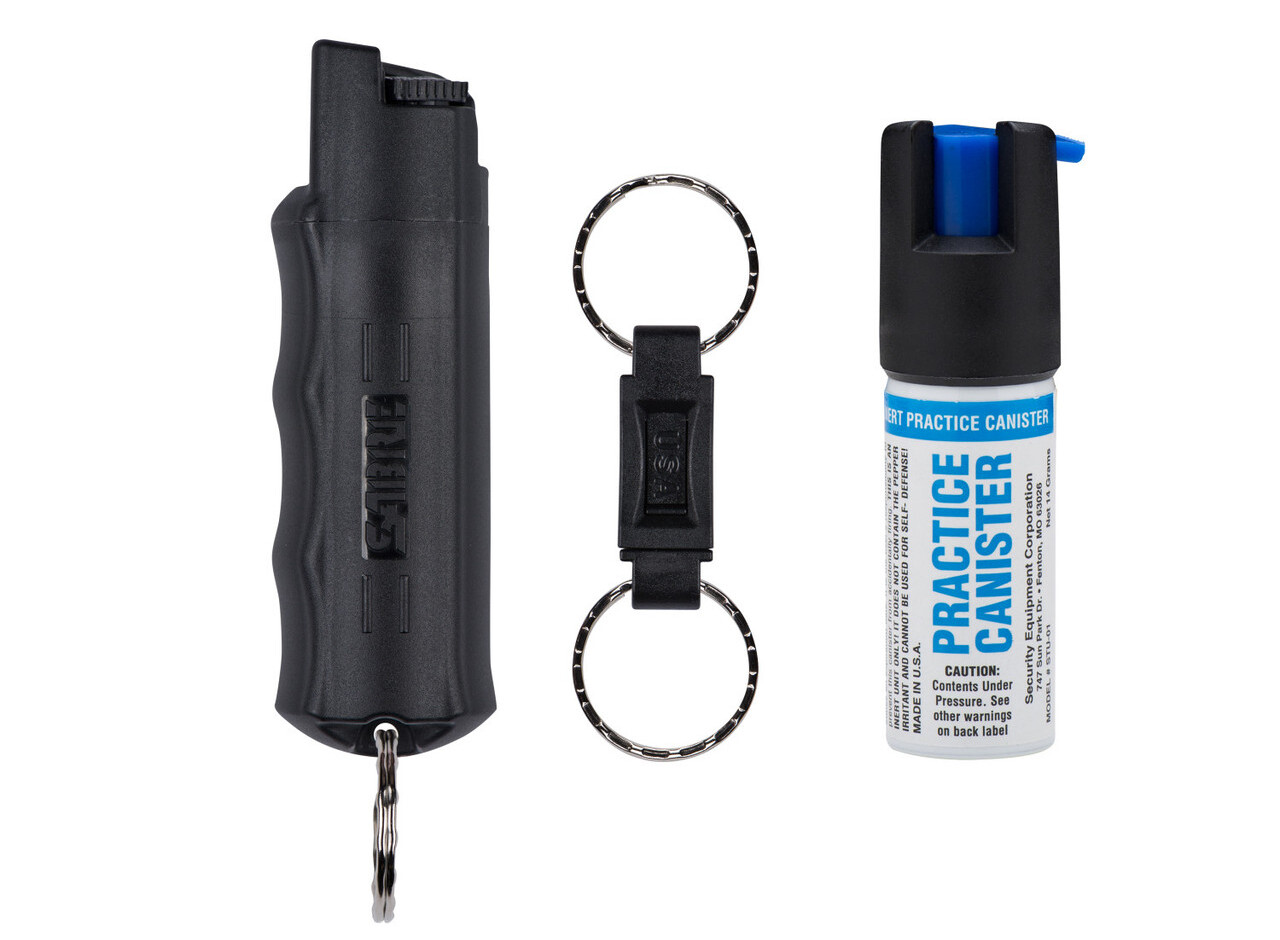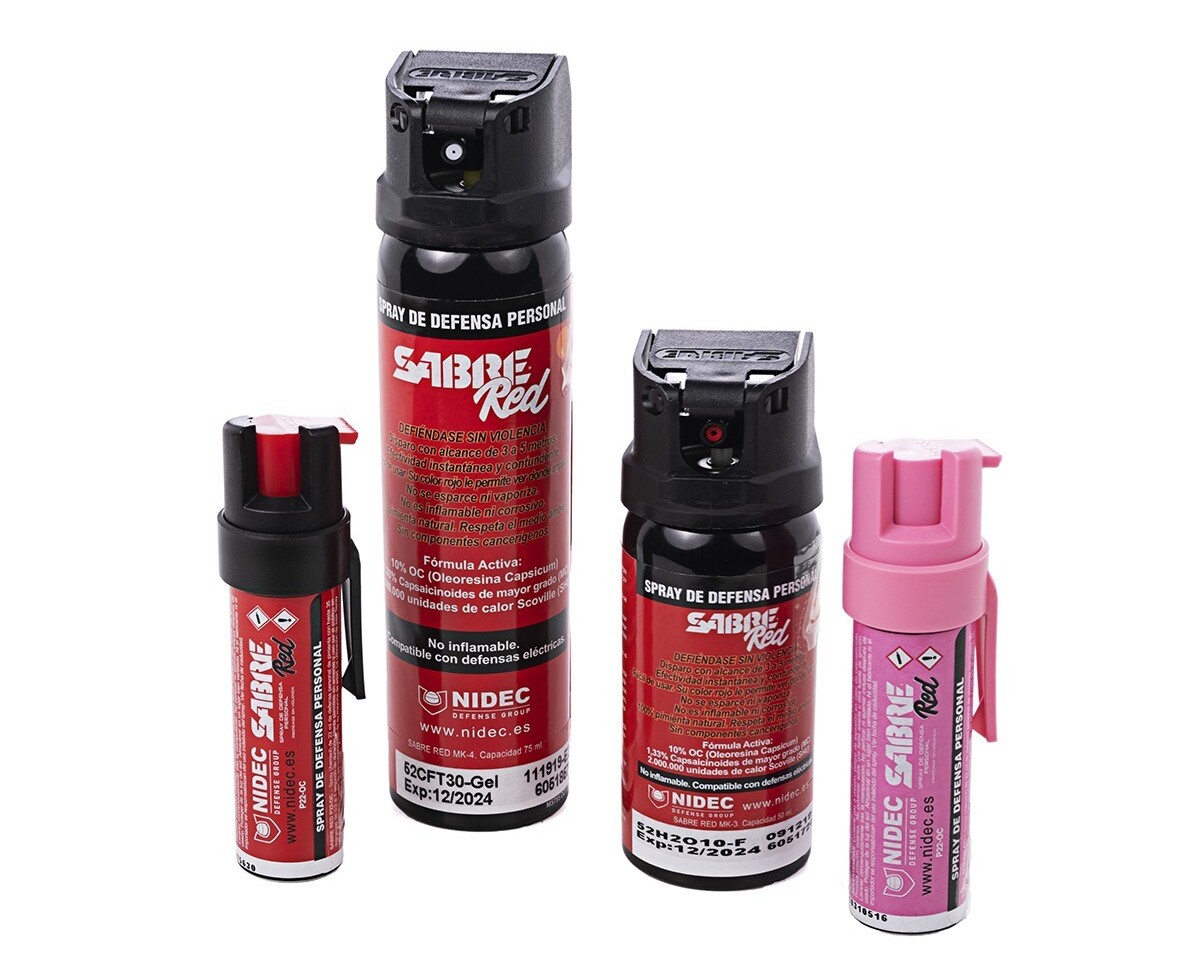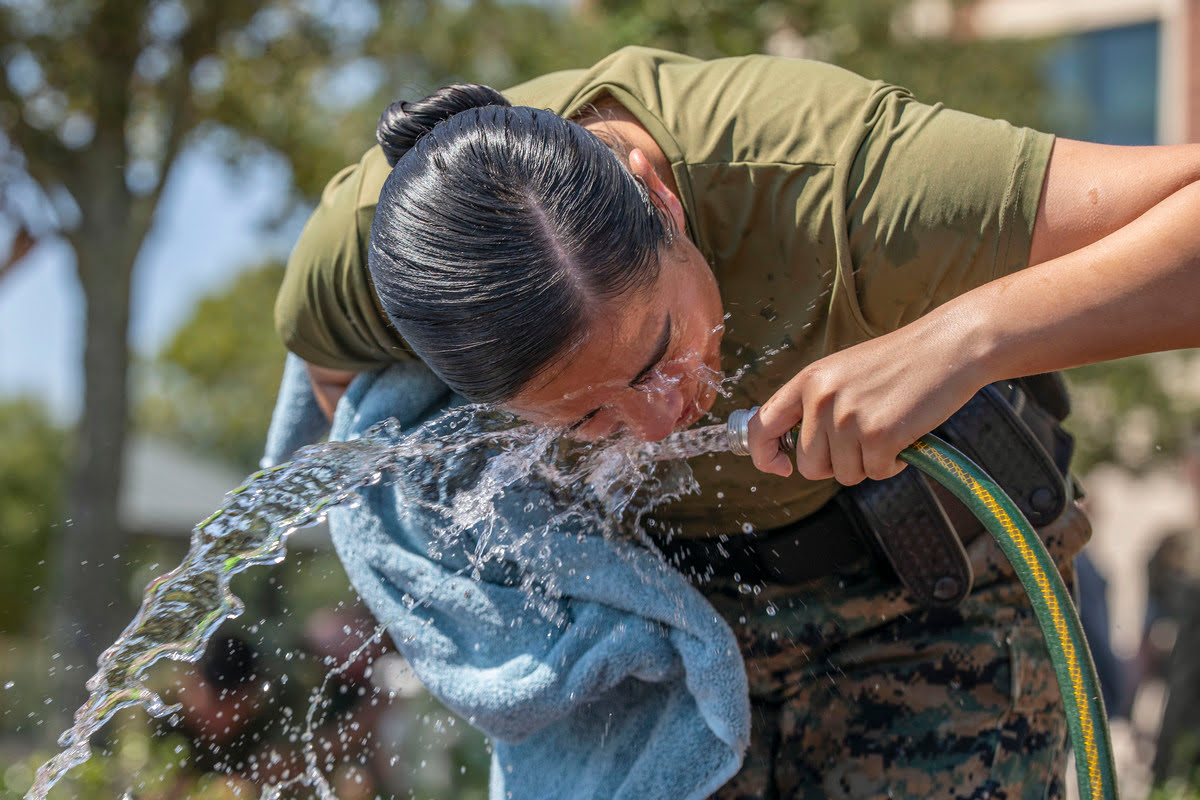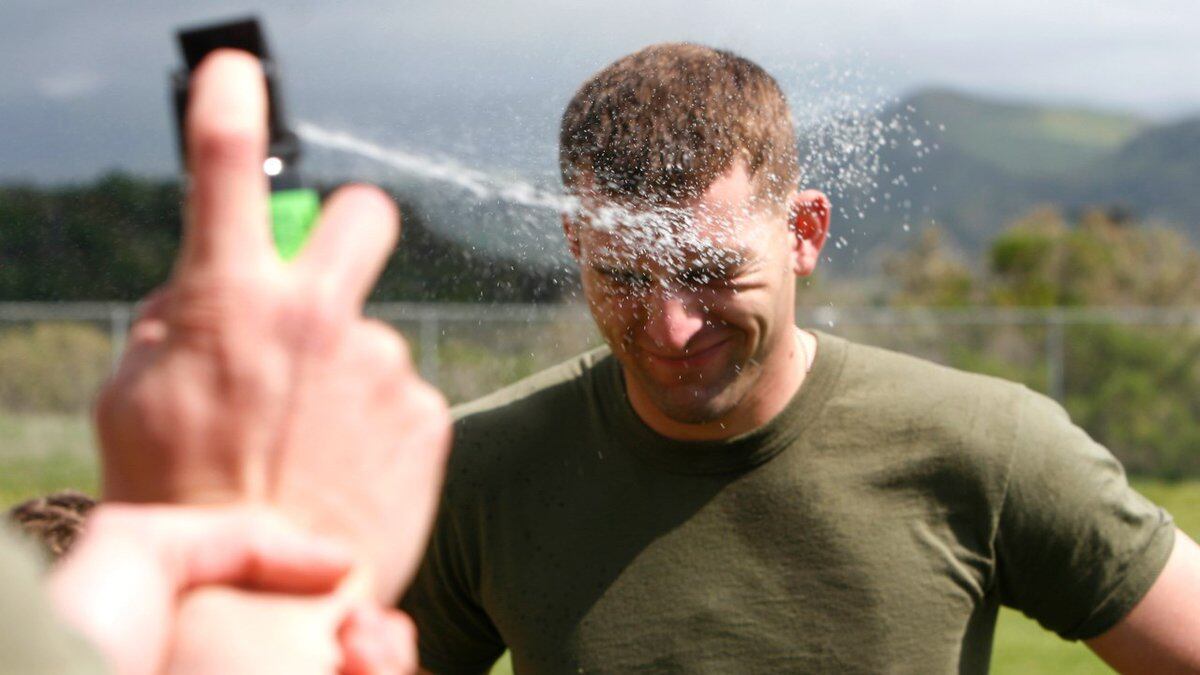Home>Home Security and Surveillance>How To Stop Pepper Spray Burn On Skin
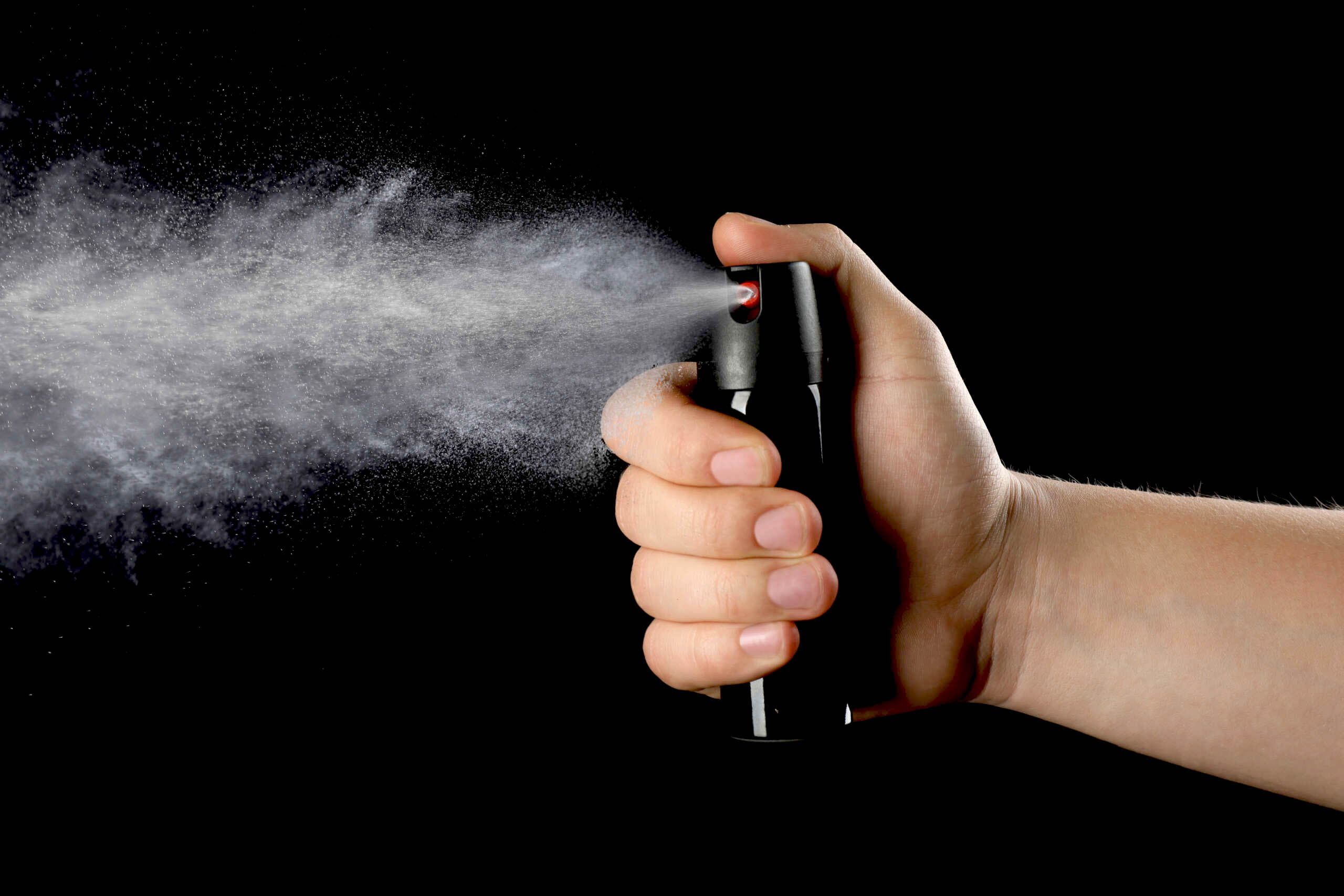

Home Security and Surveillance
How To Stop Pepper Spray Burn On Skin
Modified: August 17, 2024
Learn effective ways to stop pepper spray burn on skin at home with our expert tips and tricks. Ensure your home security and surveillance measures are in place for ultimate protection.
(Many of the links in this article redirect to a specific reviewed product. Your purchase of these products through affiliate links helps to generate commission for Storables.com, at no extra cost. Learn more)
Introduction
Pepper spray is a popular self-defense tool that can incapacitate an assailant temporarily. It is widely used by law enforcement agencies, security personnel, and individuals concerned about their safety. While effective in deterring attackers, pepper spray can have some unwanted effects, including a burning sensation on the skin. In this article, we will explore the various methods to ease the discomfort caused by pepper spray burns and provide relief to affected individuals.
Understanding Pepper Spray and Its Effects on the Skin
Pepper spray, also known as oleoresin capsicum (OC) spray, is a non-lethal aerosol containing capsaicin, a chemical derived from chili peppers. When sprayed on an individual, it causes temporary eye closure, coughing, and respiratory distress, making it difficult for the attacker to continue their aggression. However, if the spray comes into contact with the skin, it can cause a burning sensation, redness, swelling, and intense discomfort.
Immediate Steps to Take after Exposing Skin to Pepper Spray
If you or someone you know comes into contact with pepper spray, it is essential to act swiftly to minimize the effects. Remember, the longer the residue remains on the skin, the more intense the burning sensation will become. Here are some immediate steps to follow:
1. Move to a well-ventilated area: Firstly, move away from the source of the spray to a location with fresh air. This helps to reduce further exposure and allows you to breathe more comfortably.
2. Avoid rubbing or touching the affected area: Touching or rubbing the skin can spread the capsaicin, intensifying the burning sensation. It is crucial to avoid touching the affected area with your hands or any other object.
3. Keep your eyes closed: If the spray has also affected your eyes, it is important to keep them closed to prevent further irritation. Blinking or rubbing the eyes can worsen the discomfort.
Now, let’s explore various methods to alleviate the burning sensation caused by pepper spray on the skin. Please note that these methods are intended for mild discomfort. If the symptoms persist or worsen, it is advisable to seek medical attention.
Key Takeaways:
- When dealing with pepper spray burns, act quickly by moving to fresh air, avoiding rubbing the affected area, and rinsing with cool water. Seek medical attention for severe burns to ensure proper evaluation and treatment.
- Using methods like flushing with water, applying aloe vera gel, or using a cold compress can provide relief from mild pepper spray burns. However, it’s important to seek medical attention for severe symptoms or prolonged discomfort.
Understanding Pepper Spray and Its Effects on the Skin
Pepper spray, also known as oleoresin capsicum (OC) spray, is a potent self-defense tool that is used to immobilize assailants temporarily. It contains a chemical compound called capsaicin, derived from chili peppers, which causes a burning sensation when it comes into contact with the skin. Understanding the effects of pepper spray on the skin is crucial in effectively treating and alleviating the discomfort caused by exposure.
When pepper spray is sprayed onto the skin, the capsaicin irritates the nerve endings, causing a range of symptoms. These symptoms can vary in severity depending on the concentration of capsaicin in the spray and the duration of exposure. Common effects include a burning sensation, redness, swelling, and intense discomfort.
Capsaicin works by binding to pain receptors on the skin, specifically the vanilloid receptor subtype 1 (VR1). Once activated, these receptors transmit pain signals to the brain, resulting in the burning sensation. The intensity of the burn can vary from mild to severe, depending on various factors such as individual sensitivity and the amount of pepper spray applied.
It’s important to note that the effects of pepper spray are temporary and typically last for about 30 minutes to 2 hours. However, during this time, the discomfort can be quite intense and may require immediate attention to provide relief.
In addition to the physical effects, exposure to pepper spray can also cause psychological distress, anxiety, and panic due to the sudden and unexpected nature of the incident. It is important to remain calm and focused when treating pepper spray burns to ensure proper care and alleviate the discomfort effectively.
It is worth mentioning that people with certain medical conditions, such as respiratory problems, asthma, or allergies, may experience more severe reactions to pepper spray exposure. It is recommended for individuals with pre-existing conditions to seek medical attention following exposure, even if the symptoms seem mild.
Overall, understanding the effects of pepper spray on the skin is essential in determining the appropriate course of action for treatment. By being aware of the mechanisms by which pepper spray causes discomfort and the temporary nature of the effects, individuals can better prepare themselves to mitigate and alleviate the symptoms associated with exposure.
Immediate Steps to Take after Exposing Skin to Pepper Spray
If you or someone you know has been exposed to pepper spray and has come into contact with the skin, it is crucial to take immediate steps to minimize the effects and alleviate the discomfort. The faster you act, the better the chances of reducing the intensity of the burning sensation. Here are some immediate steps to follow:
1. Move to a well-ventilated area: Firstly, move away from the source of the spray to a location with fresh air. This helps to reduce further exposure and allows you to breathe more comfortably. If possible, step outside to get fresh air and let the wind disperse the spray particles.
2. Avoid rubbing or touching the affected area: It is natural to want to rub or touch the area that has been exposed to pepper spray to alleviate the discomfort. However, this can worsen the situation by spreading the capsaicin and intensifying the burning sensation. It is crucial to resist the urge to touch or rub the affected area with your hands or any other object.
3. Keep your eyes closed: If the pepper spray has also affected your eyes, it is important to keep them closed to prevent further irritation. Blinking or rubbing the eyes can worsen the discomfort and potentially transfer the capsaicin to other parts of your face or body. If your eyes are burning, try to blink gently and allow tears to flush out any residue.
4. Remove contaminated clothing and accessories: If any of your clothing or accessories have come into contact with the pepper spray, remove them to prevent further skin exposure and contamination. Be careful when removing the items to avoid spreading the capsaicin to other areas of your body.
5. Rinse the affected area with water: Flushing the affected area with cool water can help remove the pepper spray residue and provide temporary relief. Use a gentle stream of water to avoid further irritation. Avoid using hot water, as it can open up the pores and potentially intensify the burning sensation.
6. Avoid using soap or other products initially: While it may be tempting to use soap or other cleansing products to remove the pepper spray residue, it is best to avoid them initially. Soap can react with the capsaicin and potentially cause further irritation. Stick to using water for the first few rinses.
Remember, these immediate steps are intended to provide initial relief from the burning sensation caused by pepper spray exposure. They are not a substitute for proper medical treatment or follow-up care. If the discomfort persists, worsens, or if you have any other concerns, it is important to seek medical attention promptly. A healthcare professional will be able to assess the situation and provide appropriate guidance for further treatment.
Method 1: Flushing the Affected Area with Water
One of the most immediate and effective methods to alleviate the burning sensation caused by pepper spray on the skin is to flush the affected area with water. Water helps to remove the capsaicin, the active component in pepper spray, from the skin and provides temporary relief from the discomfort. Here’s how you can properly flush the affected area:
1. Find a source of clean, cool water: Look for a sink, a hose, or any other water source with a gentle flow of cool water. Avoid using hot water as it can exacerbate the burning sensation by opening up the pores and potentially spreading the capsaicin.
2. Position the affected area under the water stream: Carefully position the affected area, such as the face, arms, or any other part of the body, under the water stream. Maintain a comfortable distance to ensure the water flow is gentle and not too forceful.
3. Allow the water to flow over the affected area: Let the water flow over the affected area for several minutes. The continuous flow of water helps to dilute and flush away the capsaicin residue, reducing the burning sensation. Make sure to cover all areas exposed to the pepper spray.
4. Gently pat dry with a clean towel: After thoroughly rinsing the affected area, use a clean towel to gently pat it dry. Avoid rubbing the area vigorously as it can further irritate the skin. Be sure to use a towel that has not been contaminated with pepper spray to prevent cross-contamination.
5. Repeat the process if necessary: Depending on the intensity of the burning sensation, you may need to repeat the flushing process multiple times to experience relief. It is essential to remain patient and persistent in thoroughly rinsing the affected area to remove as much capsaicin as possible.
6. Do not touch or rub the area: After rinsing and drying, avoid touching or rubbing the area. Touching the affected area with contaminated hands can transfer the capsaicin and intensify the discomfort. Keep the area clean and avoid contact with any potential irritants.
Flushing the affected area with cool water helps to soothe the skin and minimize the immediate effects of pepper spray exposure. However, it is important to note that this method provides temporary relief and does not completely eliminate the capsaicin from the skin. If the burning sensation persists or worsens, it is advisable to seek further medical attention for proper evaluation and treatment.
Method 2: Using a Milk or Milk-Based Product
Another effective method to alleviate the burning sensation caused by pepper spray on the skin is by using milk or milk-based products. Milk contains casein, a protein that helps to neutralize the capsaicin, providing relief from the discomfort. Here’s how you can use milk to soothe the affected area:
1. Choose a milk product: You can use regular cow’s milk, but other milk-based products such as yogurt or buttermilk can also be effective. If using yogurt or buttermilk, make sure they do not contain any additional flavors or additives, as these may irritate the skin further.
2. Soak a clean cloth or cotton pads: Pour some milk into a bowl and soak a clean cloth or cotton pads in the milk. Ensure that the cloth or pads are thoroughly saturated but not dripping.
3. Apply the milk-soaked cloth or pads to the affected area: Gently place the milk-soaked cloth or pads on the affected area. If needed, hold them in place with light pressure for a few minutes. Ensure good coverage of the affected area, especially areas with intense burning or redness.
4. Leave it on for 10-15 minutes: Allow the milk to remain on the affected area for about 10-15 minutes. This will give the milk enough time to work its soothing properties and help neutralize the capsaicin.
5. Rinse the area with cool water: After the recommended time, remove the milk-soaked cloth or pads and rinse the area with cool water. Gently pat dry with a clean towel.
6. Repeat the process if necessary: If the burning sensation persists, you can repeat the process using fresh milk or milk-based product-soaked cloth or pads. Additional applications may provide further relief.
Milk and milk-based products can help calm and neutralize the capsaicin, reducing the burning sensation caused by pepper spray exposure. The soothing properties of milk provide instant relief and can be particularly effective for individuals with sensitive skin. However, if the discomfort persists or worsens, it is advisable to seek medical attention for proper evaluation and treatment.
Read more: How Do You Get Pepper Spray Off Your Skin
Method 3: Applying a Baking Soda Paste
Using a baking soda paste is another effective method to alleviate the burning sensation caused by pepper spray on the skin. Baking soda, also known as sodium bicarbonate, has alkaline properties that help neutralize the acidity of capsaicin, providing relief and soothing the affected area. Here’s how you can create and apply a baking soda paste:
1. Mix baking soda with water: In a small bowl, combine equal parts baking soda and water to create a paste. Start with a tablespoon of each and adjust the amounts as needed to achieve a smooth consistency.
2. Stir until well blended: Use a spoon or fork to thoroughly mix the baking soda and water until they form a smooth paste. Make sure there are no lumps in the mixture.
3. Apply the paste to the affected area: Gently apply the baking soda paste to the affected area using clean fingers or a cotton swab. Ensure that the entire affected area is covered with a thin layer of the paste.
4. Leave it on for 10-15 minutes: Allow the baking soda paste to sit on the skin for about 10-15 minutes. This timeframe allows the alkaline properties of baking soda to neutralize the capsaicin and provide relief from the burning sensation.
5. Rinse the area with cool water: After the recommended time, rinse the area with cool water to remove the baking soda paste. Gently pat the area dry with a clean towel.
6. Repeat the process if necessary: If the burning sensation persists, you can repeat the process by reapplying a fresh layer of the baking soda paste. Multiple applications may be required to alleviate the discomfort completely.
It is important to note that while baking soda paste can provide relief from the burning sensation, it may not be suitable for everyone. Some individuals may experience skin irritation or allergic reactions to baking soda. Therefore, it is recommended to perform a patch test on a small area of skin before applying the paste to the entire affected area. If any adverse reactions occur, discontinue use and seek medical attention.
Baking soda paste is a readily available and cost-effective solution that can help neutralize the effects of pepper spray on the skin. However, if the burning sensation persists, worsens, or if you have any concerns, it is advisable to seek medical attention for further evaluation and treatment.
Method 4: Administering a Mild Antacid Solution
Administering a mild antacid solution is another effective method to alleviate the burning sensation caused by pepper spray on the skin. Antacids contain alkaline substances that help neutralize the acidic properties of capsaicin, providing relief and soothing the affected area. Here’s how you can administer a mild antacid solution:
1. Choose a mild antacid: Select an antacid that contains ingredients such as aluminum hydroxide, magnesium hydroxide, or calcium carbonate. These ingredients have alkaline properties that can neutralize the acid in capsaicin. Avoid antacids that have additional flavors or additives that may irritate the skin.
2. Mix the antacid with water: In a small bowl, dissolve a teaspoon of the mild antacid in a cup of lukewarm water. Stir the mixture until the antacid is completely dissolved.
3. Soak a clean cloth or cotton pads: Soak a clean cloth or cotton pads in the antacid solution. Ensure that the cloth or pads are thoroughly saturated but not dripping.
4. Apply the antacid-soaked cloth or pads to the affected area: Gently place the antacid-soaked cloth or pads on the affected area. If needed, hold them in place with light pressure for a few minutes. Ensure good coverage of the affected area, especially areas with intense burning or redness.
5. Leave it on for 10-15 minutes: Allow the antacid solution to remain on the affected area for about 10-15 minutes. This will give the antacid enough time to neutralize the capsaicin and provide relief from the burning sensation.
6. Rinse the area with cool water: After the recommended time, remove the antacid-soaked cloth or pads and rinse the area with cool water. Gently pat dry with a clean towel.
7. Repeat the process if necessary: If the burning sensation persists, you can repeat the process using fresh antacid solution-soaked cloth or pads. Additional applications may provide further relief.
Administering a mild antacid solution can help neutralize the acidity of capsaicin, reducing the burning sensation caused by pepper spray exposure. This method is particularly effective for individuals with sensitive skin. However, if the discomfort persists or worsens, it is advisable to seek medical attention for proper evaluation and treatment.
Rinse the affected area with cold water for at least 15 minutes. Avoid using hot water as it can open up pores and spread the pepper spray. Do not rub the skin, as it can worsen the burn.
Method 5: Utilizing a Soap and Water Solution
Using a soap and water solution is a simple yet effective method to alleviate the burning sensation caused by pepper spray on the skin. Soap helps to break down the oily residue of pepper spray, allowing it to be rinsed away with water. Here’s how you can utilize a soap and water solution:
1. Find a gentle, fragrance-free soap: Look for a mild, fragrance-free soap that is formulated for sensitive skin. Avoid using harsh soaps or those with added fragrances, as these can potentially irritate the skin further.
2. Dilute the soap with water: In a clean bowl or basin, mix a small amount of the gentle soap with lukewarm water. Aim for a soapy solution that is not overly sudsy but provides enough lather to cleanse the affected area.
3. Gently cleanse the affected area: Wet the affected area with the soap and water solution. Using clean hands, gently lather the solution onto the skin, ensuring thorough coverage of all exposed areas. Avoid rubbing or scrubbing vigorously, as this can further irritate the skin.
4. Rinse with cool water: Once the affected area has been cleansed, rinse it thoroughly with cool water. Use a gentle stream of water to remove the soap residue, ensuring that all traces of the soap are rinsed away.
5. Pat dry with a clean towel: After rinsing, gently pat the area dry with a clean towel. Avoid rubbing the skin vigorously, as this can cause further irritation.
6. Repeat the process if necessary: If the burning sensation persists, you can repeat the process by cleansing the affected area again with the soap and water solution. Additional applications may be required to alleviate the discomfort completely.
Using a soap and water solution helps to remove the residual pepper spray from the skin, reducing the burning sensation. It is crucial to choose a mild, fragrance-free soap to minimize the risk of skin irritation. However, if the discomfort persists or worsens, or if you have any concerns, it is advisable to seek medical attention for proper evaluation and treatment.
Method 6: Using a Hydrocortisone Cream or Gel
Using a hydrocortisone cream or gel can be an effective method to alleviate the burning sensation and reduce inflammation caused by pepper spray on the skin. Hydrocortisone is a topical corticosteroid that helps to relieve itching, redness, and irritation. Here’s how you can use a hydrocortisone cream or gel:
1. Choose an over-the-counter hydrocortisone cream or gel: Look for a mild hydrocortisone cream or gel with a concentration of 0.5% to 1%. Higher concentrations may require a prescription. Ensure that the product is specifically formulated for external use on the skin.
2. Cleanse the affected area: Before applying the hydrocortisone cream or gel, cleanse the affected area with a mild soap and water solution. Gently pat the area dry with a clean towel.
3. Apply a thin layer of hydrocortisone: Take a small amount of the hydrocortisone cream or gel and apply a thin layer to the affected area. Massage it gently into the skin until it is absorbed. Avoid applying too much pressure to prevent further irritation.
4. Follow the instructions and dosage: Follow the instructions provided with the hydrocortisone cream or gel regarding the frequency of application and dosage. Typically, it is recommended to apply it two to three times a day or as directed by a healthcare professional.
5. Avoid using hydrocortisone for an extended period: Hydrocortisone is intended for short-term use to alleviate symptoms and reduce inflammation. Prolonged use can have side effects and may require medical supervision. If the discomfort persists after a few days of use or if you have any concerns, consult a healthcare professional.
6. Be cautious about using hydrocortisone on sensitive areas: Exercise caution when applying hydrocortisone on sensitive areas, such as the face or near the eyes, as it may cause further irritation. If applying near sensitive areas, consult a healthcare professional for guidance.
Hydrocortisone cream or gel can provide relief by reducing inflammation and calming the burning sensation caused by pepper spray exposure. However, if the discomfort persists, worsens, or if you have any concerns, it is advisable to seek medical attention for proper evaluation and guidance.
Read more: How To Treat Grass Burn On Skin
Method 7: Applying a Cold Compress
Applying a cold compress is a simple and effective method to alleviate the burning sensation and reduce inflammation caused by pepper spray on the skin. The cold temperature helps to numb the area, providing relief and soothing the discomfort. Here’s how you can apply a cold compress:
1. Prepare a cold compress: Start by soaking a clean washcloth or towel in cold water. You can also add ice cubes to the water if desired. Alternatively, you can use a gel pack or a bag of frozen vegetables wrapped in a thin cloth.
2. Squeeze out excess water: Once the cloth or towel is soaked in cold water, gently squeeze out any excess water to prevent dripping.
3. Apply the cold compress to the affected area: Gently place the cold compress on the affected area. Hold it in place with light pressure for a few minutes. Ensure good coverage of the affected area, especially areas with intense burning or redness.
4. Leave it on for 10-15 minutes: Allow the cold compress to remain on the skin for about 10-15 minutes. This will give the cold temperature enough time to numb the area and reduce the burning sensation.
5. Take breaks if needed: If the cold becomes too intense or uncomfortable, take short breaks by removing the cold compress for a minute or two before reapplying it. Listen to your body’s response and adjust accordingly.
6. Repeat the process if necessary: If the burning sensation persists, you can repeat the process using a fresh cold compress. Multiple applications may be required to alleviate the discomfort completely.
Applying a cold compress helps to constrict blood vessels and reduce inflammation, providing immediate relief from the burning sensation caused by pepper spray exposure. Remember to be cautious when using a cold compress directly on the skin, as extremely cold temperatures can potentially damage the skin. Always wrap the compress in a thin cloth or towel to create a barrier between the cold source and the skin.
While a cold compress can provide temporary relief, it is important to note that it may not address all the effects of pepper spray exposure. If the discomfort persists or worsens, or if you have any concerns, it is advisable to seek medical attention for proper evaluation and treatment.
Method 8: Soothing the Skin with Aloe Vera Gel
Soothing the skin with aloe vera gel is an effective method to alleviate the burning sensation and promote healing caused by pepper spray on the skin. Aloe vera has natural anti-inflammatory properties and cooling effects, making it an excellent option for soothing irritated skin. Here’s how you can use aloe vera gel:
1. Choose a pure aloe vera gel: Look for a pure aloe vera gel or extract that contains minimal additives or fragrances. Avoid products that have additional ingredients, as they may cause further irritation on the skin.
2. Cleanse the affected area: Before applying the aloe vera gel, cleanse the affected area with a mild soap and water solution. Gently pat the area dry with a clean towel.
3. Apply a thin layer of aloe vera gel: Take a small amount of the aloe vera gel and apply a thin layer to the affected area. Massage it gently into the skin until it is absorbed. Ensure good coverage of the affected area, especially areas with intense burning or redness.
4. Allow it to dry and absorb: Let the aloe vera gel dry and absorb into the skin. This may take a few minutes. Avoid covering the area with clothing or bandages until the gel has fully absorbed.
5. Repeat the process if necessary: If the burning sensation persists, you can repeat the process by reapplying a fresh layer of aloe vera gel. Multiple applications may be required to alleviate the discomfort completely.
6. Consider using aloe vera gel with lidocaine: If the burning sensation is particularly intense, aloe vera gel with added lidocaine can provide additional numbing and pain-relieving effects. However, it is important to follow the instructions on the product and use it sparingly.
Aloe vera gel can help soothe and calm the skin, reducing inflammation and providing relief from the burning sensation caused by pepper spray exposure. It also helps to moisturize the skin and promote healing. If you do not have access to aloe vera gel, you can use the gel directly from an aloe vera plant, as it contains the same soothing properties.
While aloe vera gel is generally safe to use, it is essential to be cautious if you have any known allergies to aloe vera or if you experience any adverse reactions. If the discomfort persists, worsens, or if you have any concerns, it is advisable to seek medical attention for proper evaluation and treatment.
Treating Severe Pepper Spray Burns and Seeking Medical Attention
In most cases, the methods mentioned earlier can effectively alleviate the burning sensation caused by pepper spray exposure. However, in severe cases or if the discomfort persists or worsens, it is crucial to seek immediate medical attention for proper evaluation and treatment. Here are a few guidelines for treating severe pepper spray burns:
1. Assess the severity of the burn: If the burning sensation is intense, and there are significant redness, swelling, blistering, or difficulty in breathing, it may indicate a severe pepper spray burn. Seek medical attention immediately if you experience these symptoms.
2. Remove contaminated clothing: If your clothing or accessories have come into contact with pepper spray, it’s essential to remove them carefully to prevent further exposure and contamination.
3. Seek medical advice: Contact your healthcare provider or go to the nearest emergency room for evaluation and guidance on how to treat the severe pepper spray burn. Medical professionals can assess the burn’s severity and provide appropriate treatment.
4. Follow medical recommendations: Follow the medical professionals’ recommendations regarding the treatment plan. This may involve more intensive methods such as specialized burn dressings, pain management medications, or other interventions tailored to the severity of the burn.
5. Be cautious with home remedies for severe burns: While home remedies can provide relief for mild pepper spray burns, they may not be suitable for severe burns. Using unproven remedies or delaying medical attention can lead to complications and prolonged healing times.
Seeking medical attention for severe pepper spray burns is crucial to ensure proper evaluation, treatment, and to minimize the risk of potential complications. Medical professionals have the expertise to assess the extent of the burn and recommend appropriate care to promote healing and alleviate discomfort.
In addition to seeking medical attention, it is important to document the incident if it was caused by an assault or an encounter with law enforcement. Take photographs of the affected area, gather witness contact information, and consider filing a report with the authorities if appropriate.
Remember, while these guidelines can provide general information on seeking medical attention, it is essential to consult with a healthcare professional for specific advice and guidance based on your individual situation.
Precautions and Tips for Dealing with Pepper Spray Burns on the Skin
When dealing with pepper spray burns on the skin, it is important to take certain precautions to minimize the discomfort and promote healing. Here are some precautions and tips to keep in mind:
1. Familiarize yourself with local laws and regulations: Before carrying or using pepper spray, it is essential to familiarize yourself with the local laws and regulations regarding its possession and use. Understanding the legal aspects can help you make informed decisions and use the spray responsibly.
2. Use pepper spray responsibly: If you are using pepper spray for personal protection, aim for the assailant’s face, specifically the eyes and nose. Directing it correctly can minimize the risk of exposing yourself to the spray in the event of a close encounter.
3. Be prepared: Carry a small bottle of clean water, a mild soap, aloe vera gel, and a clean cloth or towel in case of pepper spray exposure. Being prepared can help you respond promptly and alleviate the discomfort more effectively.
4. Act quickly: If you or someone else is exposed to pepper spray and it comes into contact with the skin, act swiftly to minimize the effects. Move to a well-ventilated area away from the source of the spray as soon as possible.
5. Avoid touching or rubbing the affected area: Touching or rubbing the skin can spread the capsaicin and intensify the burning sensation. Avoid touching the affected area with your hands or any other object to prevent further irritation.
6. Flush the affected area with water: Immediately flush the affected area with cool water to remove the pepper spray residue. Use a gentle stream and avoid using hot water, as it can worsen the burning sensation.
7. Seek medical attention for severe burns: If you experience severe symptoms such as intense burning, difficulty breathing, blistering, or significant redness and swelling, seek immediate medical attention. Severe burns require professional evaluation and treatment.
8. Avoid applying irritants or harsh products: After pepper spray exposure, avoid applying irritants or harsh products to the affected area. This includes alcohol-based products, strong detergents, or abrasive substances. These can further irritate the skin and delay healing.
9. Keep the affected area clean and moisturized: Clean the affected area with a mild soap and water solution to prevent infection. Apply a gentle moisturizer or aloe vera gel to keep the skin hydrated and promote healing.
10. Monitor for allergic reactions: Some individuals may have allergies or sensitivities to pepper spray or certain ingredients in home remedies. If you experience any signs of an allergic reaction such as rash, itching, or difficulty breathing, seek immediate medical attention.
Remember, these precautions and tips are meant to provide general guidance for dealing with pepper spray burns on the skin. It is important to consult with a healthcare professional for specific advice and recommendations based on your individual circumstances.
Read more: How To Store Pepper Spray
Conclusion
Dealing with pepper spray burns on the skin can be a challenging and uncomfortable experience. However, by following the appropriate methods and precautions, you can minimize the effects and promote healing. It is important to remember that the methods discussed in this article are intended for mild to moderate pepper spray burns. In severe cases, seeking immediate medical attention is crucial.
Flushing the affected area with water, using milk or milk-based products, applying a baking soda paste, utilizing a mild antacid solution, using a soap and water solution, applying a hydrocortisone cream or gel, using a cold compress, and soothing the skin with aloe vera gel are all effective methods for alleviating the burning sensation and reducing inflammation.
However, it is equally important to understand the limitations of these methods. They provide temporary relief and may not address all the effects of pepper spray exposure. If the burning sensation persists, worsens, or if there are severe symptoms such as blistering, difficulty breathing, or intense swelling, seeking immediate medical attention is strongly recommended.
In dealing with pepper spray burns, it is crucial to prioritize your safety and wellbeing. Familiarize yourself with local regulations regarding pepper spray use, act responsibly when using it, and seek appropriate medical attention when necessary. Adhering to the precautions, tips, and methods discussed in this article can help you effectively deal with pepper spray burns on the skin and promote a faster recovery.
Remember, everyone’s experience with pepper spray burns may vary, and it is important to consult with a healthcare professional for personalized advice and guidance. By taking prompt action, seeking medical attention when needed, and caring for the affected areas appropriately, you can navigate the healing process and alleviate the discomfort caused by pepper spray burns on the skin.
Frequently Asked Questions about How To Stop Pepper Spray Burn On Skin
Was this page helpful?
At Storables.com, we guarantee accurate and reliable information. Our content, validated by Expert Board Contributors, is crafted following stringent Editorial Policies. We're committed to providing you with well-researched, expert-backed insights for all your informational needs.

